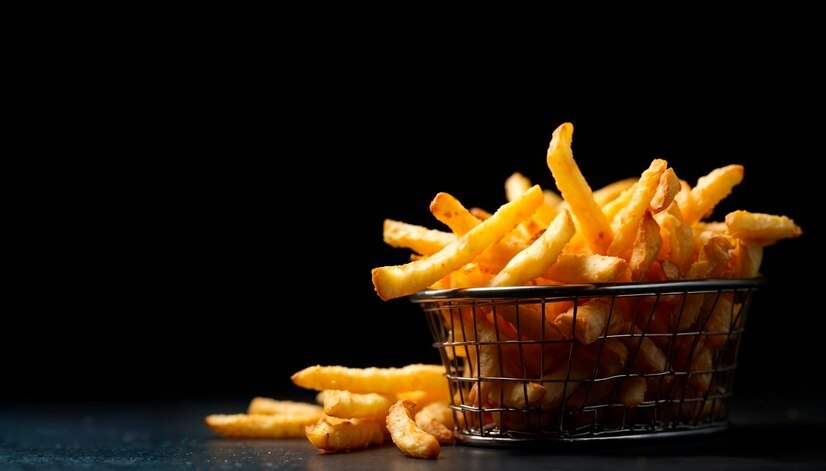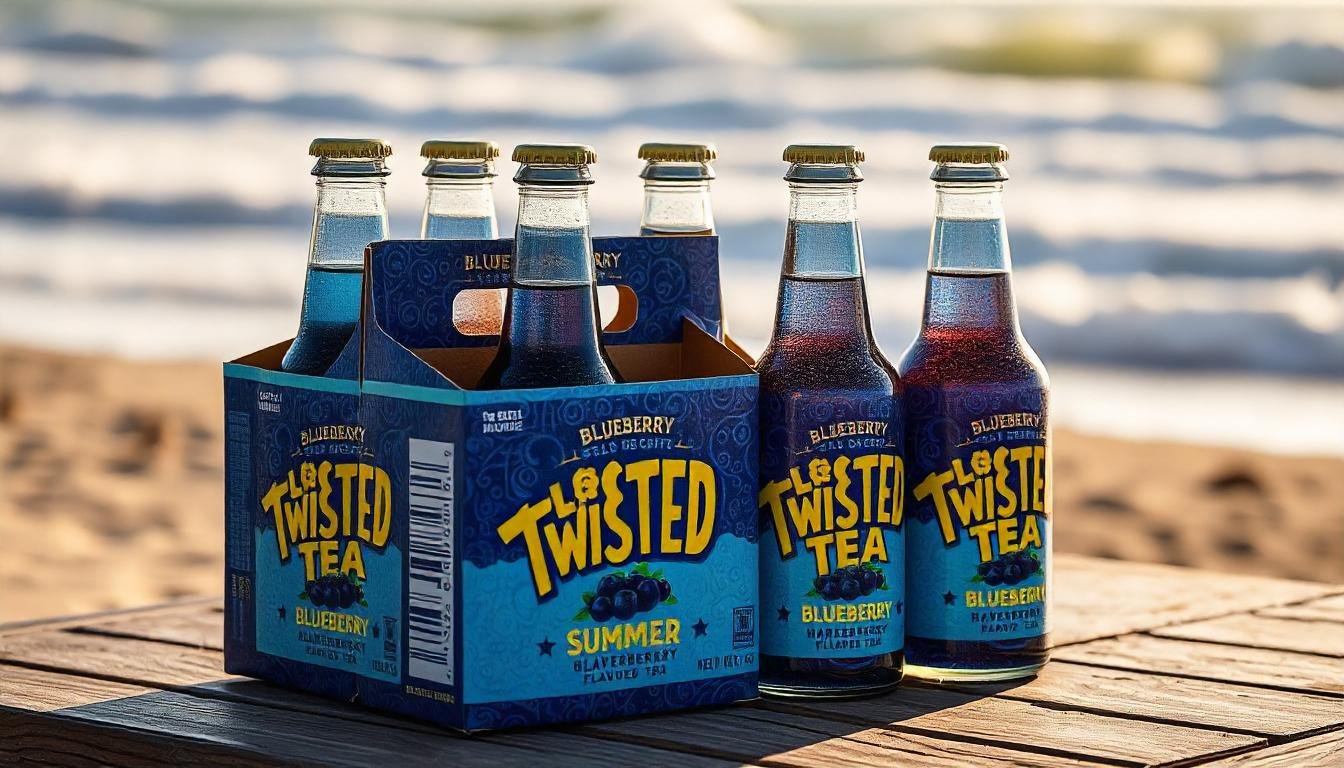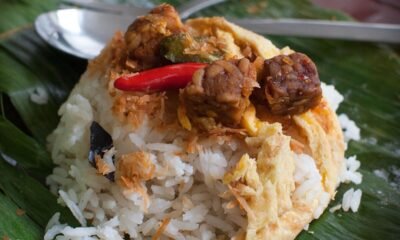Cooking
Air fryer frozen french fries Crispy, Quick, and Delicious

Cooking
5 Things To Look for When Buying a Pellet Cooker

Investing in a pellet grill allows you to smoke, grill, bake, and sear with precision. For grill enthusiasts new to pellet cooking, selecting a model that best suits your needs can be difficult. Here are five things to look for when buying pellet cookers:
1. Check the Temperature Range
Temperature range determines which cooking methods are supported. Low temperatures bake, braise, and smoke juicy barbecue, while high heat sears steaks and gives chicken a crispy, smoky crust. A grill that reaches up to 800 degrees allows you to achieve cooking techniques requiring low and high temperatures. Digital controls allow you to set and maintain precise temperatures. A warming drawer also offers a cold-smoke option, extending your range of available recipes.
2. Evaluate Hopper Capacity
Hopper capacity determines how frequently pellets must be refilled during long cook sessions. Larger hoppers can hold more pellets, providing a continuous feed so you can smoke or slow-cook without constant monitoring. A higher hopper capacity also offers the advantage of broader temperature ranges and flavor infusions.
3. Assess Build Quality
Thicker gauge metals and rugged construction lend durability to outside elements like heat, wind, rain, and ice. Welded seams and tight-fitting doors minimize heat loss for consistent temperatures. Smooth door operation allows easy refueling. Electrical components should also be rated for outdoor use. Stainless steel components reduce the likelihood of rust.
Review a pellet grill’s removable parts, such as grease buckets, shields, and ash drawers. This will make cleaning up easy so you can focus on selecting your next recipe. In case of breakdown, make sure replacement parts are easy to obtain and install.
4. Evaluate Cooking Surface
The grill’s cooking surfaces dictate how much food you can prepare in one session. Available capacity should align with your culinary needs, such as smoking a whole chicken or turkey. Many pellet grills support additional cooking accessories like seafood grills, rib racks, or jerky rods. These additions can expand your grilling repertoire.
Some pellet cookers also offer zone cooking, including direct and indirect heat, enabling you to use multiple temperatures during the same cooking session. This allows the preparation of many foods using the same pellet fuel.
5. Look For Smart Features
Many modern cookers include smart technologies that make grilling easy. Wi-Fi-enabled models allow you to monitor and modify cook temps via a smartphone app while relaxing or entertaining guests. Remote notifications tell you when the grill reaches your desired temperature or when cooking is complete. Other upgrades include built-in meat temperature probes, digital displays with presets for different meats, and data collection. Integrated smart features help simplify the art of smoking or pellet grilling.
Get Your Pellet Cookers Today
Invest in a grill with the temperature range, hopper capacity, and features that meet your cooking goals. Adding a range of pellet types, such as oak, cherry, or applewood, can further expand your culinary creations and wow guests. Contact a pellet grill supplier today to explore the benefits of adding pellet cooking to your next cookout.
Cooking
Asian Desserts Sweet Treats from East to West

When it comes to desserts, Asia offers a dazzling array of flavors, textures, and ingredients that are as diverse as the continent itself. From the sticky, sweet treats of Southeast Asia to the rich, creamy confections of East Asia, Asian desserts have long captivated the palates of food enthusiasts around the world. These desserts often feature ingredients like coconut milk, rice flour, matcha, sesame seeds, and tropical fruits, giving them a unique twist that sets them apart from Western sweets.
In this article, we will take a journey through some of the most beloved Asian desserts from different regions. Whether you’re looking to try a traditional Chinese dessert, a comforting Japanese sweet, or a unique Thai treat, these delightful confections are sure to satisfy your sweet tooth. Plus, we’ll explore easy recipes that will allow you to recreate these flavors in your own kitchen.
The Richness of Traditional Asian Desserts
Asian desserts are often characterized by their use of fresh, natural ingredients, as well as their emphasis on balance. Unlike some Western desserts, which can be overwhelmingly sweet, many Asian sweets focus on subtle sweetness, with a focus on texture, fragrance, and flavor harmony. Common ingredients in Asian desserts include sweet rice, mung beans, taro, coconut, matcha, red beans, and lotus seeds.
Popular Asian Desserts from Different Cultures
1. Mochi (Japan)
Mochi is one of the most popular Japanese desserts and has gained international recognition for its chewy texture and versatility. Made from glutinous rice (also called mochi rice), this dessert is pounded into a sticky, elastic dough and often shaped into small balls or discs. Mochi can be filled with sweet fillings like red bean paste, or served with flavors such as matcha or strawberry.
Mochi can also be used in a variety of other desserts, like the mochi ice cream, which features a small ball of ice cream wrapped in a thin layer of mochi. This treat is a refreshing and unique way to enjoy ice cream, especially in warmer weather.
2. Sesame Balls (China)
In Chinese cuisine, sesame balls or Jian Dui are a popular dessert served during special occasions like Chinese New Year. These golden, crispy pastries are filled with sweet red bean paste and coated in sesame seeds, which provide a satisfying crunch. When deep-fried, the exterior becomes crisp and crunchy, while the interior remains soft and chewy.
These sesame balls are not only delicious but also symbolize wealth and prosperity in Chinese culture, making them a popular choice for celebrations.
3. Gulab Jamun (India)
Gulab Jamun is a beloved Indian dessert made from milk solids, typically in the form of khoya (reduced milk), which is then deep-fried and soaked in sugar syrup infused with rose water or cardamom. The result is a warm, sweet, and aromatic treat that is soft on the inside and slightly crisp on the outside.
This dessert is typically served during festivals and special occasions like Diwali and Eid, and its rich, melt-in-your-mouth texture makes it an indulgent favorite.
4. Mango Sticky Rice (Thailand)
One of the most iconic Thai desserts, mango sticky rice combines sweet, sticky rice with coconut milk, topped with fresh, ripe mango slices. The contrast of the rich, creamy coconut with the sweetness of the mango makes this dessert both refreshing and satisfying. The sticky rice is often seasoned with a pinch of salt, which enhances the sweetness of the dish.
This dessert is especially popular during mango season in Thailand and has become a beloved treat in many Southeast Asian restaurants worldwide.
5. Taro Coconut Tapioca Pudding (Southeast Asia)
Taro is a root vegetable that is commonly used in Southeast Asian sweets, and it pairs beautifully with coconut milk to create a rich, creamy pudding. In many Southeast Asian countries, taro and tapioca pearls are combined to make a comforting dessert, often flavored with coconut milk and a touch of pandan leaves for added fragrance.
This pudding is a popular choice at Dim Sum restaurants or as a street food dessert in countries like Thailand, Vietnam, and the Philippines.
6. Che Ba Mau (Vietnam)
Che Ba Mau, or Vietnamese three-color dessert, is a vibrant and refreshing sweet treat made up of three colorful layers, each with a distinct texture and flavor. The layers usually consist of sweet mung beans, red beans, and green pandan jelly. The dessert is served chilled, often topped with shaved ice and coconut milk.
Che Ba Mau is a favorite summer dessert in Vietnam, offering a cool and satisfying way to beat the heat with its combination of textures and flavors.
7. Bibingka (Philippines)
Bibingka is a traditional Filipino dessert made from rice flour, coconut milk, and sugar, and is often baked in a clay pot lined with banana leaves. This dessert has a slightly dense texture, similar to a cake, and is typically topped with salted eggs, cheese, and grated coconut.
Bibingka is especially popular during Christmas in the Philippines, where it is sold by street vendors during the holiday season.
Easy and Modern Asian Dessert Recipes
In addition to traditional Asian desserts, modern interpretations and variations of these sweet treats have emerged, making them even more accessible and easy to prepare. Here are a few simple Asian dessert recipes that you can try at home:
1. Matcha Ice Cream
Matcha ice cream is a delicious Japanese dessert made from powdered green tea leaves. Its slightly bitter flavor pairs perfectly with the sweetness of the ice cream base. You can easily make matcha ice cream at home by combining heavy cream, sugar, and matcha powder. The result is a creamy, refreshing dessert that is both unique and satisfying.
Ingredients:
- 1 cup heavy cream
- 1 cup whole milk
- 1/2 cup sugar
- 2 tbsp matcha powder
- 1 tsp vanilla extract
Instructions:
- Whisk the matcha powder with sugar and milk until smooth.
- Add the cream and vanilla extract, then mix thoroughly.
- Pour into an ice cream maker and churn according to the manufacturer’s instructions.
- Freeze for several hours before serving.
2. Coconut Rice Pudding
For a quick and easy dessert, coconut rice pudding is a comforting option. Combining sticky rice, coconut milk, and sugar, this dish is similar to a classic rice pudding but with a tropical twist. Top with fruits like mango or lychee for added flavor.
Ingredients:
- 1 cup sticky rice
- 1 can coconut milk
- 1/4 cup sugar
- 1/4 tsp salt
- Fresh fruit for topping (optional)
Instructions:
- Cook the sticky rice according to package instructions.
- In a saucepan, heat the coconut milk, sugar, and salt over medium heat.
- Once the rice is cooked, combine it with the coconut milk mixture, stirring to combine.
- Cook for an additional 5-10 minutes until the pudding thickens.
- Serve warm or chilled, topped with fresh fruit.
3. Black Sesame Soup (Tang Sheng)
A traditional Chinese dessert, black sesame soup is a velvety, warm sweet treat made from ground black sesame seeds. This dessert is known for its rich, nutty flavor and is believed to be good for health, particularly for skin and hair. You can easily make it by simmering ground black sesame with sugar and water to create a smooth, silky soup.
Ingredients:
- 1/4 cup black sesame seeds, ground
- 1/2 cup sugar
- 4 cups water
Instructions:
- In a saucepan, combine the ground black sesame with water and bring to a boil.
- Reduce heat and let it simmer for 15-20 minutes, stirring frequently.
- Add sugar to taste and continue simmering until the soup reaches your desired thickness.
- Serve hot, optionally with glutinous rice balls for a traditional touch.
Conclusion
The world of Asian desserts is as diverse as the cultures that create them. From rich, creamy puddings to chewy, crispy delights, Asian sweets offer something for every taste and occasion. Whether you’re indulging in a traditional Chinese sesame ball, savoring a bowl of Thai mango sticky rice, or enjoying the refreshing coolness of a Vietnamese three-color dessert, these desserts are bound to delight your taste buds.
Not only are Asian desserts delicious, but many of them also have a rich cultural significance. So why not try your hand at making some of these treats in your own kitchen? They’re sure to impress your guests and leave you craving more!
Cooking
Blueberry Twisted Tea Today You Need to Try this Recipe

Blueberry twisted tea is a delightful fusion of sweet, tart blueberries and robust tea, creating a uniquely refreshing beverage perfect for any occasion. Whether you’re a tea enthusiast or a casual sipper, this vibrant drink promises to tantalize your taste buds and deliver unexpected health benefits.
Let’s dive into everything you need to know about blueberry twisted tea—from its preparation to its nutritional perks and creative twists.
What is Blueberry Twisted Tea?
Blueberry twisted tea is a flavored tea beverage that combines fresh or infused blueberries with black, green, or herbal tea, often enhanced with natural sweeteners, herbs, or even alcohol for a boozy twist. This drink is renowned for its vibrant blue-purple hue, fruity aroma, and the perfect balance of sweetness and tanginess.
The Health Benefits of Blueberry Twisted Tea
Blueberry twisted tea is more than just a refreshing drink; it’s a health-boosting powerhouse. Combining the natural goodness of blueberries with the robust properties of tea, this beverage delivers a range of benefits for the mind and body. Let’s explore why blueberry twisted tea deserves a spot in your daily routine.
Packed with Antioxidants
Blueberries are celebrated for their high antioxidant content, especially anthocyanins, which are responsible for their vibrant blue-purple color. These antioxidants play a critical role in neutralizing free radicals, protecting your cells from damage, and reducing inflammation.
- Supports Skin Health: Antioxidants help prevent premature aging by combating oxidative stress, keeping your skin youthful and radiant.
- Improves Immunity: They strengthen the immune system, making your body more resilient against infections.
Boosts Heart Health
Drinking blueberry twisted tea regularly may contribute to better heart health. Both blueberries and certain teas, such as green or black tea, are known for their cardiovascular benefits.
- Reduces Cholesterol Levels: Blueberries help lower bad cholesterol (LDL) and improve good cholesterol (HDL).
- Improves Blood Pressure: The flavonoids in tea combined with the nutrients in blueberries can support healthy blood pressure levels.
- Enhances Circulation: Better blood flow reduces the risk of heart diseases and improves overall vitality.
Enhances Brain Function
Blueberries are often called “brain berries” for their neuroprotective properties. Adding them to tea creates a delicious drink that supports cognitive health.
- Improves Memory: Studies show that regular consumption of blueberries can help enhance memory and delay age-related cognitive decline.
- Boosts Mental Clarity: The natural caffeine in tea, coupled with the calming properties of blueberries, offers a balanced mental boost.
- Fights Brain Fog: The antioxidants in blueberries help clear toxins from the brain, improving focus and concentration.
Aids in Digestion
Blueberry twisted tea is an excellent option for promoting digestive health. The fiber from blueberries combined with the digestive-enhancing properties of tea creates a gut-friendly beverage.
- Eases Digestive Discomfort: Compounds in tea can soothe the stomach, while blueberries add fiber for improved gut motility.
- Supports Gut Microbiome: Blueberries are prebiotic, meaning they help nourish the beneficial bacteria in your gut.
Balances Blood Sugar Levels
For those mindful of their blood sugar, blueberry twisted tea is a smart choice. The natural sweetness of blueberries reduces the need for added sugar, and their low glycemic index ensures a steady energy release.
- Regulates Glucose Levels: Blueberries have compounds that improve insulin sensitivity.
- Minimizes Sugar Crashes: Tea’s steady caffeine boost prevents the energy dips associated with sugary drinks.
Hydration with Extra Benefits
Drinking blueberry twisted tea is a flavorful way to stay hydrated. Unlike sugary sodas or plain water, this beverage combines hydration with added vitamins and antioxidants.
- Natural Detox: The antioxidants in blueberries and tea help detoxify the body by flushing out toxins.
- Refreshing Flavor: With its fruity and robust taste, you’re more likely to drink enough fluids throughout the day.
Supports Vision Health
Blueberries are known to promote eye health due to their rich content of vitamin C, vitamin E, and other antioxidants. Combined with tea, this drink becomes a tasty way to care for your eyes.
- Prevents Eye Strain: Perfect for those who spend hours in front of screens, this drink helps alleviate strain.
- Protects Against Vision Loss: Antioxidants like lutein in blueberries reduce the risk of age-related macular degeneration.
Calms and Soothes
The act of sipping tea is naturally calming, but the addition of blueberries enhances its stress-reducing benefits. Whether enjoyed warm or iced, blueberry twisted tea can be a moment of relaxation in a hectic day.
- Reduces Stress Hormones: The soothing properties of tea combined with the nutritional benefits of blueberries help lower cortisol levels.
- Encourages Mindfulness: Preparing and drinking this beautiful tea can become a meditative ritual.
Recipe for Blueberry Twisted Tea
Blueberry twisted tea is a simple yet vibrant beverage that you can whip up in minutes. It’s a perfect drink for any occasion, whether you’re hosting a party or just looking for a refreshing treat. Here’s a step-by-step recipe to make this delicious drink at home.
Ingredients
To create blueberry twisted tea, you’ll need the following:
- 1 cup fresh or frozen blueberries – Packed with antioxidants and natural sweetness.
- 4 cups brewed tea (black, green, or herbal) – Choose your preferred tea base for a robust or mild flavor.
- 1/4 cup honey, sugar, or other sweetener (optional) – Adjust based on your taste preferences.
- 1 lemon (sliced) – For garnish and added citrusy brightness.
- Fresh mint leaves (optional) – Adds a refreshing aroma and flavor.
- Ice cubes – To chill the tea.
Instructions
-
Brew the Tea
- Start by brewing 4 cups of your favorite tea—black tea for a bold taste, green tea for an earthy note, or herbal tea for a caffeine-free option.
- Allow the tea to cool to room temperature or place it in the refrigerator for faster chilling.
-
Prepare the Blueberry Mixture
- In a blender, combine the fresh or thawed blueberries with a splash of water. Blend until smooth.
- Strain the blueberry puree through a fine mesh sieve or cheesecloth to remove any pulp, leaving a silky blueberry essence. (Optional for those who prefer a smooth drink.)
-
Mix the Tea and Blueberry Puree
- In a large pitcher, combine the cooled tea and the strained blueberry puree. Stir thoroughly.
- Add sweetener to taste. Honey works particularly well as it complements the fruity flavor.
-
Add Ice and Chill
- Fill the pitcher with ice cubes to cool the mixture. Alternatively, you can place the tea in the refrigerator for at least 30 minutes to chill.
-
Garnish and Serve
- Pour the tea into glasses filled with ice cubes. Garnish each glass with a slice of lemon and a sprig of mint for an extra burst of flavor and an elegant touch.
Pro Tips for the Perfect Blueberry Twisted Tea
- Boost the Flavor: Add a splash of fresh lemon juice to enhance the tartness of the blueberries.
- Alcoholic Twist: For an adult version, mix in a shot of vodka, rum, or gin for a cocktail spin.
- Carbonated Option: Replace half the tea with sparkling water for a fizzy, refreshing twist.
- Berry Mix: Use a combination of berries like raspberries or blackberries for a richer fruit profile.
Creative Twists for Blueberry Twisted Tea
- Blueberry Mojito Tea: Add a splash of rum and muddled mint for a tropical twist.
- Sparkling Blueberry Tea: Replace some tea with sparkling water for a fizzy delight.
- Herbal Infusion: Experiment with hibiscus or chamomile tea for a soothing flavor.
- Berry Medley: Combine blueberries with raspberries or strawberries for a mixed-berry experience.
Why Choose Homemade Blueberry Twisted Tea Over Store-Bought?
Homemade blueberry twisted tea is free from artificial flavors and excess sugar, making it a healthier option. Additionally, you can customize the ingredients to suit your taste and dietary preferences.
Serving Suggestions for Blueberry Twisted Tea
- Serve as a chilled summer drink alongside fresh salads.
- Pair with savory appetizers like bruschetta or cheese platters.
- Use as a mocktail base for family gatherings.
- Freeze into popsicles for a kid-friendly treat.
Storage Tips for Blueberry Twisted Tea
To retain its fresh flavor, store blueberry twisted tea in an airtight container in the refrigerator. Consume within 2-3 days for the best taste and nutritional value.
Blueberry Twisted Tea in Popular Culture
This vibrant drink has made its mark in cafes and social media, often featured as a photogenic beverage perfect for Instagram-worthy posts. Its striking color and versatility make it a favorite among food and drink enthusiasts.
Conclusion
Blueberry twisted tea is more than just a drink—it’s a flavorful and nutritious experience that combines the natural goodness of tea and blueberries. Whether you’re sipping it on a sunny afternoon, serving it at a gathering, or exploring its creative variations, this versatile beverage is sure to impress. Embrace the charm of blueberry twisted tea and add a splash of color and vitality to your tea rituals today!
Blueberry Twisted Tea FAQs
What type of tea is best for blueberry twisted tea?
Black or green tea works wonderfully, but herbal teas like hibiscus or chamomile can provide unique flavor profiles.
Can I use frozen blueberries?
Yes, frozen blueberries are an excellent option, especially when fresh ones are out of season.
Is blue berry twisted tea caffeine-free?
It depends on the tea base. Herbal tea versions are caffeine-free, while black and green tea contain caffeine.
Can I sweeten blue berry twisted tea naturally?
Absolutely! Honey, agave syrup, or stevia are great natural sweeteners.
Is blue berry twisted tea alcoholic?
Not typically, but you can add spirits like vodka or rum for a cocktail version.
What makes blue berry twisted tea healthy?
The combination of antioxidant-rich blueberries and nutrient-packed tea makes this beverage both refreshing and beneficial for your health.
-

 Technology3 weeks ago
Technology3 weeks agointernet chicks: A Digital Phenomenon
-

 Recipes9 months ago
Recipes9 months agoCrab Brulee Recipe: A Gourmet Delight
-

 Recipes9 months ago
Recipes9 months agoSmoothie CCL: A Delicious and Nutritious Trend
-

 FOOD3 weeks ago
FOOD3 weeks agoÇeciir: A Journey Through Turkish Cuisine
-

 FOOD10 months ago
FOOD10 months agoCornflake Meringue Cookies
-

 FOOD9 months ago
FOOD9 months agoNasi Uduk
-

 Recipes9 months ago
Recipes9 months agoThe Ultimate Bug Juice Camp Drink Recipe for Fun and Flavor
-

 BLOGS9 months ago
BLOGS9 months agoUnveiling the Innovation: BoltBól – Revolutionizing Accessibility and Mobility
